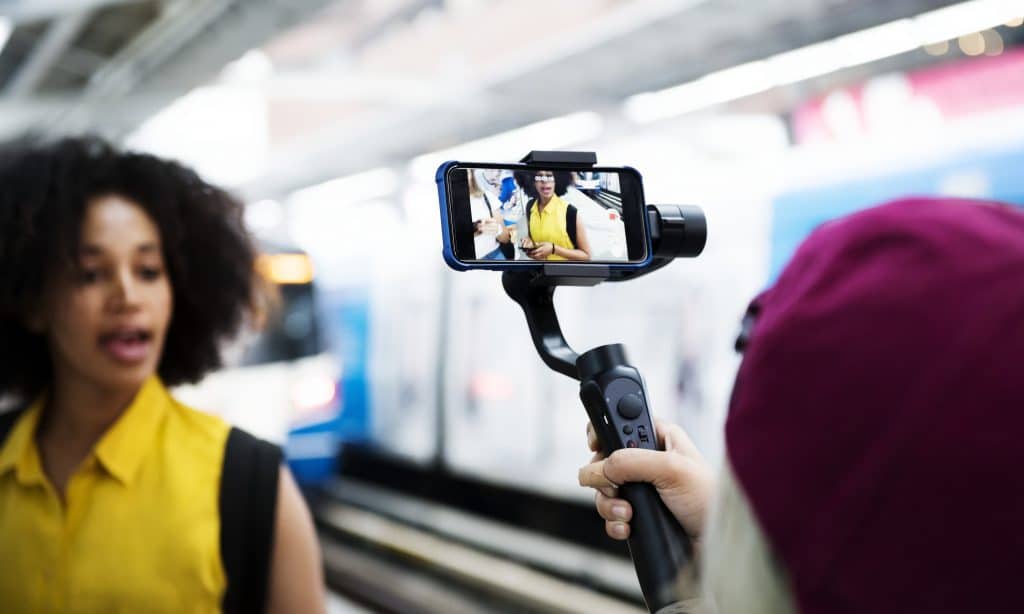It used to be that when a public relations or marketing professional wanted to create buzz for their client or brand, they would fall back on media relations.
These days, it’s a different story. Thanks to social media and the internet, it’s just as easy for a company or PR agency to create their own buzz through blogs, viral marketing campaigns and carefully curated posts as it is to secure media placements.
The power has dynamic has shifted and marketers are no longer beholden to the media, but there are still a number of reasons media relations should be considered a valuable strategy in your marketing and public relations toolkit.
Just Who Is the ‘Media’ in 2019?
Colloquially, ‘the media’ is often thought of as a broad term for people and companies that produce news-related content for print, radio, TV and digital platforms. Most people will picture a smartly dressed reporter speaking into a microphone on location or sitting in a brightly lit studio and reading off a teleprompter.
But in 2019, that stereotype is no longer accurate.

Think about your own life: who do you receive the most information from? For some of us, that may still be news presenters on ABC, CNN, Fox News or any of the other big news stations. For others, it could be the Wall Street Journal, New York Times or their local newspaper. And for still others, they may find they receive information from less traditional outlets, like YouTubers, Instagram influencers or grassroots citizen journalists who take matters into their own hands.
It’s important to keep this in mind while considering how media relations can best serve your marketing and PR strategies.
Why Is Media Relations Still Important?
1. Trust
As said by Forbes, potential consumers are still far more influenced by people they trust, which includes journalists, bloggers and influencers. While a public relations agency or brand can pump out blog after blog and design a beautiful Instagram aesthetic, when it comes to making purchasing decisions, the public will still trust a third-party opinion over content coming from the brand itself.

Utilizing media relations to secure placements through pitching to news outlets, collaborating with social influencers or releasing press releases, will ensure that the buzz around your client or brand isn’t coming just from you.
It’s also important to note that as public relations agencies and brands have taken charge of the dissemination of their content, they are no longer constricted by old definitions of what is ‘newsworthy.’ As said by Fast Company, a press release is no longer reserved for product announcements or executive changes. A release can be used to promote anything from blog posts to webinars.
2. Audience
The number one reason media relations has been a standard public relations and marketing practice for decades is because it puts your brand in front of more eyes than it would have been otherwise. That has not changed in 2019. The fact of the matter is, while there are more avenues to expand your customer base today than ever, media relations is still one of the most reliable methods.
Beyond just increasing brand awareness, media relations can also boost lead generation. As said by Channel Futures, making sure that content is media-friendly can deliver significant boost to your lead generation campaigns.
3. Authority
By becoming an authority within your industry, you can increase your credibility while your brand awareness skyrockets at the same time. As mentioned in this article by Entrepreneur, becoming an authority incentivizes potential clients and can lead to increased profitability.

So how does media relations lead to increased authority? When you prove yourself to be a valuable contributor and a reliable brand to work with, reporters will be more likely to come to you when they need commentary on an issue or news topic. Potential customers can be first exposed to your brand as a voice of authority and expert within your field.
As far as introductions go, it’s a pretty powerful first impression.
4. Sustainability
A comprehensive marketing and public relations strategy is a massive undertaking. It consumes hours upon hours of time for planning, content creation and scheduling. Once you have your plan in hand, the next arduous task is implementation, which can be just as much of a time suck as the planning phases.
Now try to keep that up constantly for an indefinite period of time. It’s not easy. There will be times when your content calendars don’t line up or there are delays. Maybe your strategy just didn’t work out this time. Regardless of the reason, there will be moments when you find yourself between strategies and in need of a stopgap the keep the buzz going in the meantime.
During these times, having established relationships with reporters, influencers or other industry outlets from your media relations strategy can help you fill any content holes with media placements.
As said in this article by Speakerbox, reaching out to your contacts to ask what they have coming up and if there is anything that might be a good fit for you and your brand can be an effective way to get involved in upcoming stories. More than likely, they will be happy to include you as a source or let you know of upcoming stories where your brand would be a valuable contributor.
Beyond following up with any established relationships, actively pitching your content to media outlets within your industry, even during your regular marketing campaigns, can bolster or supplement your marketing strategy.
5. Growth
For a new company, getting the ball rolling and beginning to build your audience online can be a frustratingly slow process. Getting featured in any sort of publication, digital or otherwise, is often the first big push that can send follower counts, subscriptions and blog analytics soaring.

If you’re a small business or new startup, chances are your first media placement will be in a small publication – but a small publication can still have a following in the thousands to tens of thousands.
It’s important not to sell yourself short, however. Business News Daily makes the point that small businesses often don’t have a narrative attached to their brand, which gives media outlets and influencers more room to work and be creative.
How To Get Your Media Relations Strategy Started
Now that the importance of media relations has been made clear, it’s time to start thinking about how best implement it into your marketing and public relations strategy.
A good first resource is this Bplans article that lists 6 tips for getting media coverage for your business:
- Know “why.” What’s are you trying to get across to the audience with this pitch?
- Know the story. Be sure you know all angles of the story.
- Create, refine, and refine your media list again. A smaller targeted media list will be far more effective than a larger list full of media outlets unrelated to your industry.
- Write the pitch. Make sure there are no typos, it hits all the relevant points and is short.
- Practice the pitch. Have your colleagues review your pitch before you begin sending it out.
- Make the call (or send the email!) Send the pitch! It’s also important to be responsive when you get inquires back.
Let Three Girls Media Handle Your Media Relations Needs
For assistance with media relations or a variety of other marketing and PR related services, please contact us at Three Girls Media for a free consultation. We have a full staff of seasoned public relations and marketing professionals and are eager to help you reach your marketing goals.
Special Offer:
Sign up for a complimentary consultation during December and receive an Annual Marketing Planning Guide valued at $475! We offer a 30-minute phone consultation with our CEO, and can answer your questions and discuss your specific marketing needs - no strings attached. Call 408-218-2391 or contact us today to arrange your consultation!

